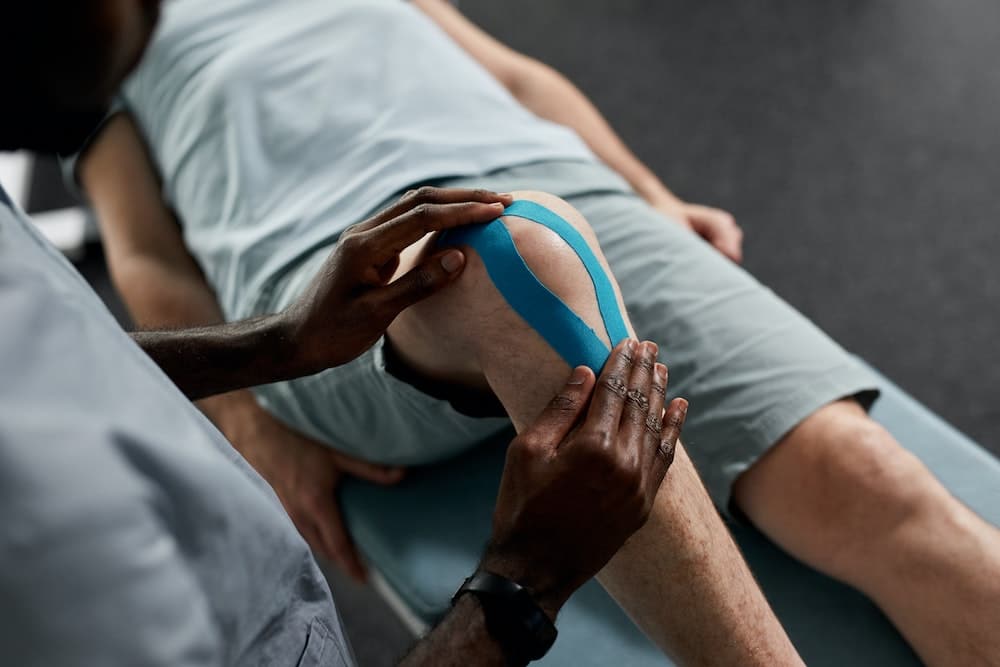Can AI-powered Robotic Exoskeletons Aid Stroke Rehabilitation in the UK?

It was just another ordinary day when you stumbled upon this article. Maybe you’re a scholar, a clinician, a stroke survivor, or perhaps a curious mind. Regardless of your background, you’re here because something piqued your interest – the audacious idea of marrying artificial intelligence (AI) with robotic exoskeletons to aid stroke rehabilitation. You may be wondering, "Is this the future of stroke rehabilitation in the UK?"
This article aims to dive into the intersection of stroke rehabilitation and technology, shedding light on the potential role of AI-powered robotic exoskeletons in the recovery journey of stroke patients.
A découvrir également : What Are the Breakthroughs in Biodegradable Electronics for Sustainable UK Tech?
The Potential of Robotic Exoskeletons
Before we delve into the specifics, let’s lay the groundwork by understanding the concept of robotic exoskeletons.
Robotic exoskeletons, simply put, are wearable devices that augment, reinforce, or restore human performance. They are an emerging tool in the field of rehabilitation, showing promise in assisting patients in regaining movement and muscle control, particularly after a devastating event like a stroke.
A découvrir également : How Can AI-Enhanced Cybersecurity Defend Against Ransomware Attacks in UK Businesses?
Early studies indicate that robotic exoskeletons can facilitate repetitive, high-intensity, task-specific, and interactive training – crucial elements in the rehabilitation process. In particular, these devices have been successful in improving limb use and motor function in stroke patients.
The Role of AI in Stroke Rehabilitation
Now, let’s consider the role of AI in this equation. How is this complex piece of technology influencing stroke rehabilitation?
Artificial intelligence is based on the idea of enabling machines to learn, reason, and solve problems – essentially mimicking the cognitive functions of the human brain. The application of AI in stroke rehabilitation is still in its infancy, but preliminary evidence suggests it offers several advantages.
For instance, AI can enhance patient engagement during therapy by adapting training protocols in real-time based on individual performance and progress. It can also provide valuable data for clinicians to track and optimize patient outcomes.
One study, available on Crossref and Google Scholar, explored the use of AI-powered robotic exoskeletons in stroke rehabilitation. The findings were encouraging. The AI system was able to identify the patient’s level of engagement, adjust the exoskeleton’s resistance levels accordingly, and provide real-time feedback. This resulted in a more dynamic and personalized rehabilitation process.
Implementing AI-Powered Robotic Exoskeletons in the UK
The potential benefits are clear, but how feasible is the implementation of AI-powered robotic exoskeletons in the UK?
The UK is no stranger to digital health innovation. With a robust tech industry and an open-minded approach to new healthcare solutions, the country is well-positioned to explore the integration of AI and robotic exoskeletons into stroke rehabilitation programs.
There are, however, various considerations to bear in mind. For one, rigorous training for healthcare professionals would be needed to ensure they can proficiently use and maintain these sophisticated devices. Furthermore, issues related to cost, insurance coverage, and regulatory approvals need to be addressed.
To help address these challenges, the National Health Service (NHS) could play a vital role in promoting the adoption of this technology. They could provide financial support for research, facilitate pilot projects, and develop guidelines for the use of AI-powered robotic exoskeletons in stroke rehabilitation.
Is The Future Here?
The marriage of AI and robotic exoskeletons holds immense promise for stroke rehabilitation. The interactive, adaptable, and data-driven approach could revolutionize the way stroke patients regain their motor ability.
However, it’s crucial to remember that these technologies are only tools. They are not a substitute for the knowledge, skills, and expertise of therapists and clinicians. The goal should always be to integrate these tools into rehabilitation programs in a way that enhances care and patient outcomes.
AI-powered robotic exoskeletons for stroke rehabilitation might still be an emerging field, but it’s a step towards a more technologically advanced, patient-centered healthcare system. The journey is only beginning and there’s much to learn, but with continued research and innovation, the future looks promising.
The Impact of Robotic Exoskeletons on Post Stroke Rehabilitation
So, let’s delve a bit deeper into how robotic exoskeletons can impact post stroke rehabilitation.
Stroke patients, unfortunately, often suffer from loss of motor function in their upper limbs, lower limbs, or both. This can make even the simplest tasks, such as walking or picking up an object, extremely difficult.
Robotic exoskeletons, however, may be able to provide some much-needed assistance. By offering support to the weakened limbs, these devices can help patients perform task-specific training exercises more effectively. This can, in turn, promote the repair and regeneration of damaged neural pathways, ultimately leading to improved motor function.
A systematic review available on Google Scholar and Crossref PubMed delved into the effectiveness of robot-assisted gait training in stroke patients. The review, which examined several studies on the topic, found that patients who underwent this type of training showed significant improvements in their walking ability compared to those who received conventional therapy alone.
Another study, available on Preprints.org, explored the use of a soft exoskeleton for upper limb rehabilitation. The results were promising. Stroke patients who used the soft exoskeleton demonstrated substantial improvements in their upper limb function post intervention.
However, to fully harness the potential of these devices, it’s crucial to tailor each robotic exoskeleton to the individual patient’s needs. This is where AI comes into play. By learning from each interaction, the AI system can adjust the device’s settings in real-time to provide optimal support, ultimately leading to a more effective and personalized rehabilitation process.
Overcoming Challenges and Looking Ahead
There’s no denying that incorporating AI-powered robotic exoskeletons into stroke rehabilitation programs comes with its challenges.
As mentioned earlier, there are practical considerations to bear in mind. Training healthcare professionals, funding the technology, and navigating regulatory hurdles are not easy tasks. Nonetheless, they are surmountable ones. It’s important to view these challenges not as roadblocks, but as stepping stones towards a more technologically advanced stroke rehabilitation landscape in the UK.
The NHS, for example, could facilitate the introduction of this technology by organizing training programs, funding research initiatives, and collaborating with regulatory bodies. Furthermore, partnerships with tech companies could be a viable option to overcome cost-related issues and expedite the development of this technology.
Despite these hurdles, the possibility of combining AI and robotic exoskeletons in stroke rehabilitation is a compelling one. The ability to provide interactive, personalized, and data-driven therapy can transform the way we approach stroke rehabilitation.
In conclusion, the use of AI-powered robotic exoskeletons in stroke rehabilitation is an exciting prospect. While the journey may be fraught with challenges, the potential benefits for stroke patients make it undoubtedly worth pursuing. With continued research, collaboration, and innovation, the future of stroke rehabilitation in the UK looks very promising indeed.
